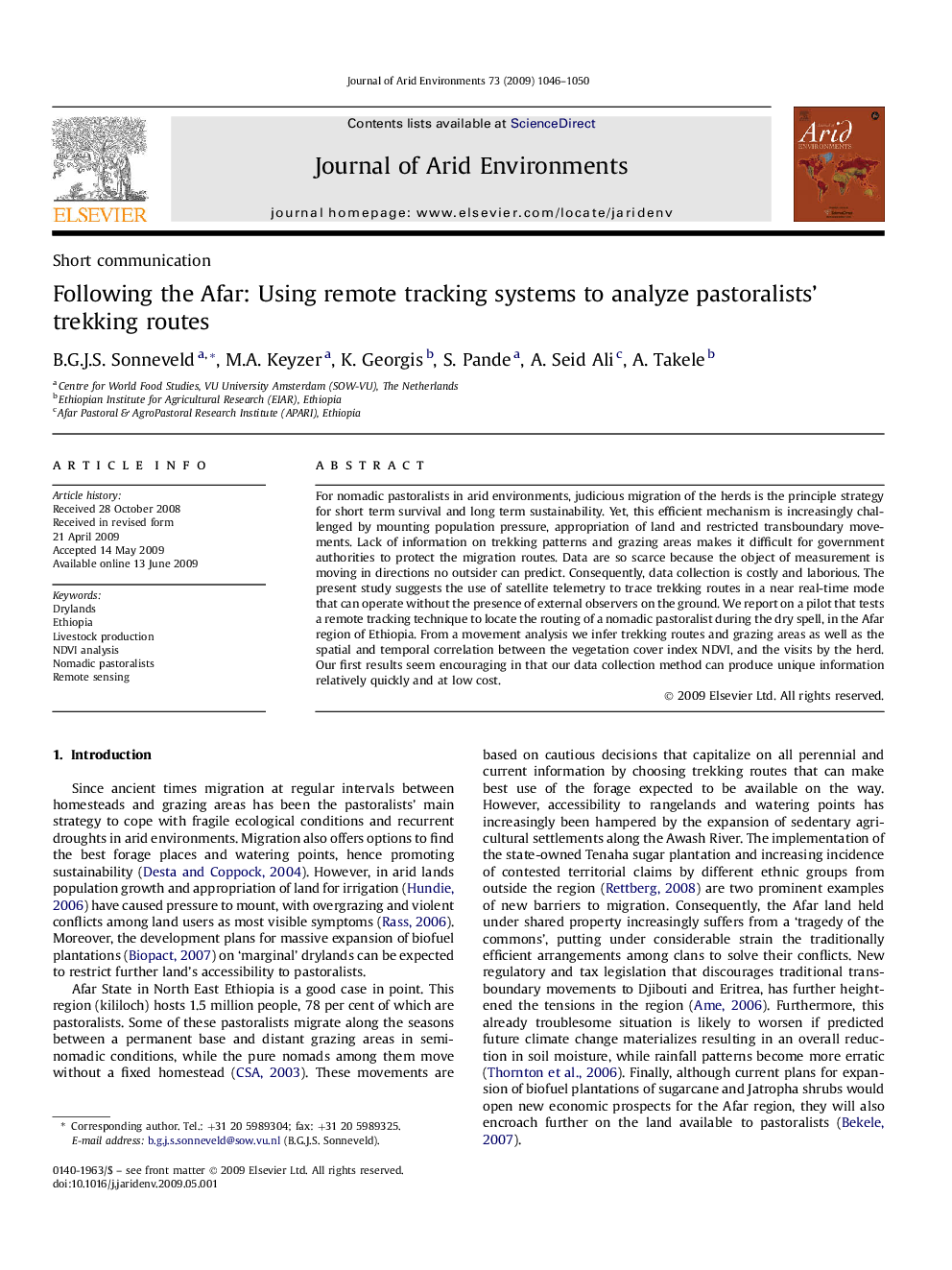| Article ID | Journal | Published Year | Pages | File Type |
|---|---|---|---|---|
| 4393733 | Journal of Arid Environments | 2009 | 5 Pages |
Abstract
For nomadic pastoralists in arid environments, judicious migration of the herds is the principle strategy for short term survival and long term sustainability. Yet, this efficient mechanism is increasingly challenged by mounting population pressure, appropriation of land and restricted transboundary movements. Lack of information on trekking patterns and grazing areas makes it difficult for government authorities to protect the migration routes. Data are so scarce because the object of measurement is moving in directions no outsider can predict. Consequently, data collection is costly and laborious. The present study suggests the use of satellite telemetry to trace trekking routes in a near real-time mode that can operate without the presence of external observers on the ground. We report on a pilot that tests a remote tracking technique to locate the routing of a nomadic pastoralist during the dry spell, in the Afar region of Ethiopia. From a movement analysis we infer trekking routes and grazing areas as well as the spatial and temporal correlation between the vegetation cover index NDVI, and the visits by the herd. Our first results seem encouraging in that our data collection method can produce unique information relatively quickly and at low cost.
Related Topics
Physical Sciences and Engineering
Earth and Planetary Sciences
Earth-Surface Processes
Authors
B.G.J.S. Sonneveld, M.A. Keyzer, K. Georgis, S. Pande, A. Seid Ali, A. Takele,
